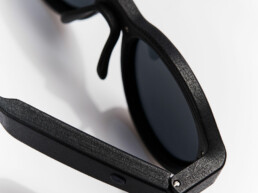Disclaimer:
The efficacy of Lexilens’ neurovisual enhancement technology is supported by academic research and peer reviewed articles in the field of visual and cognitive sciences.
However, the statements made regarding this product have not been evaluated by the Food and Drug Administration (FDA) or by any other regulatory authority.
Lexilens is not a medical device, and its efficacy has not been confirmed by FDA-approved research.
This product is not intended to diagnose, treat, cure, or prevent any disease or medical condition.
Understanding neurovisual processing
Vision is not only about the eyes — it’s also about the brain.
The eyes capture light and send visual data, but it’s the brain that interprets this information to create a clear mental image.
The first step, optical vision, is well understood.
The second step, called neurovision, is less known — and sometimes it gets a bit “crowded”.
This phenomenon, known as neurovisual crowding, can make reading less fluid.
Lexilens is designed to optimize this second step, helping your brain process visual information more efficiently.

From Academic Discovery to Innovation
In 2017, researchers studying visual perception in individuals with dyslexia made an intriguing observation:
some people’s eyes transmit visual information in a way that makes it harder for the brain to filter and stabilize what it sees — especially when reading.
This research suggested that reading difficulties may not only stem from language or cognition, but also from how the brain organizes visual input.
It introduced the concept of neurovisual crowding: when letters or symbols appear too close together, the brain struggles to separate them cleanly, creating confusion or visual overlap.
Inspired by this discovery, Abeye’s research team partnered with academic scientists to explore whether an optical system could enhance this neural processing stage without altering vision itself.
Over several years of collaboration, experimentation, and user testing, this work led to the development of Lexilens® — a patented neurovisual enhancement eyewear that dynamically filters visual information to help the brain read more efficiently.
The result is not a medical treatment, but a technological innovation:
a new way to reduce visual interference and make reading more fluent, comfortable, and enjoyable for a broad range of users.
How Lexilens® works
Lexilens® looks like ordinary eyewear, but inside lies a sophisticated optical innovation.
The lenses integrate active filters controlled by miniaturized electronics. These filters generate a subtle, imperceptible flickering effect that dynamically modulates how light reaches the eyes.
This controlled modulation helps the brain distinguish letters and shapes more clearly by reducing neurovisual crowding — the internal interference that can make reading less fluent.
In practice, Lexilens® doesn’t change what you see; it optimizes how your brain processes what your eyes perceive.
The result: text appears more stable, reading feels smoother, and concentration improves naturally, without eye strain or training.
Please note that Lexilens® is not recommended for people with a history of photosensitive epilepsy.
This precaution ensures a safe and comfortable experience for all users.

Evidence based design
Lexilens builds upon published findings in neurovisual processing, visual ergonomics, and cognitive science.
Our R&D team collaborates with academic partners and vision researchers to continuously evaluate user experience and optical performance.
While Lexilens is not a medical device, it is rooted in evidence-based innovation and validated through user studies focused on reading comfort and cognitive load reduction.
